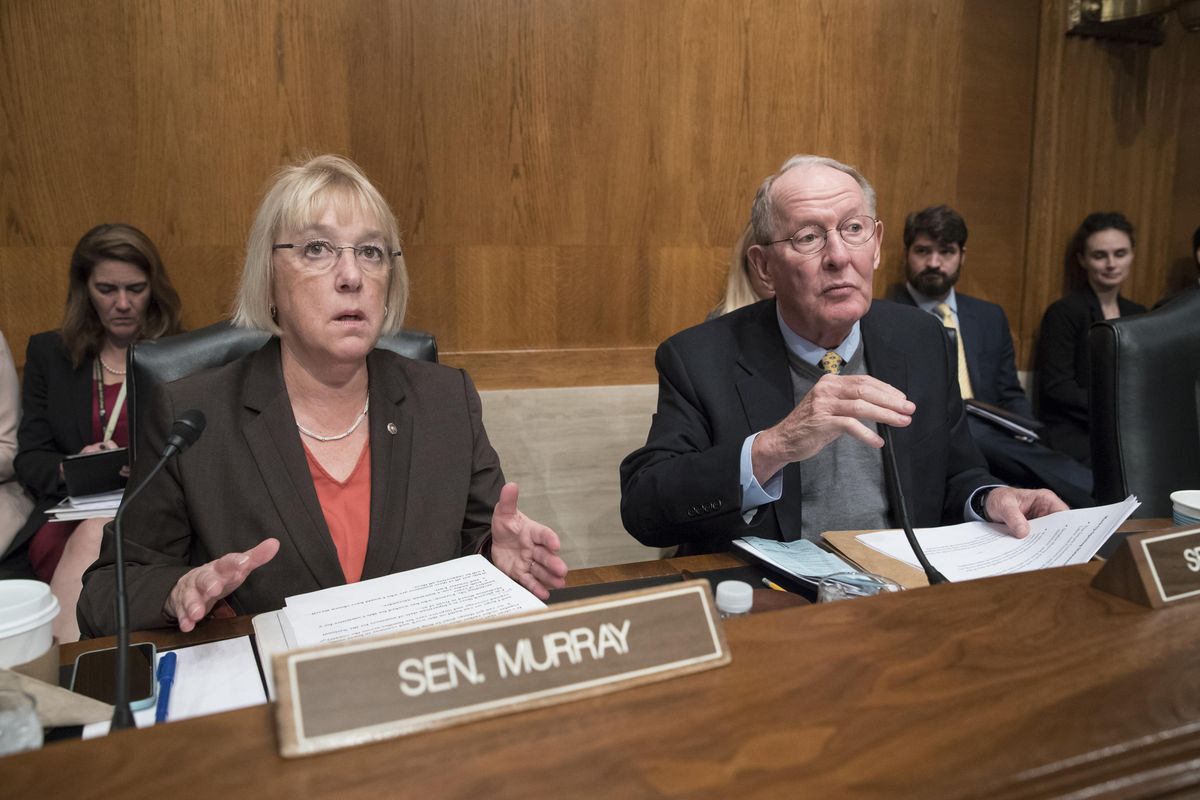Spending bill has money for opioid, fighting wildfires, schools and military

As she waited for word that the deal she helped negotiate in recent weeks would become official, Sen. Patty Murray said the omnibus spending plan should have strong support for programs vital to Washington.
Negotiators agreed to more spending to fight the opioid epidemic, expand medical research, boost education programs, fight wildfires and clean up Hanford, Murray, D-Wash., said Wednesday.
As a member of the Senate Appropriations Committee, Murray was involved in negotiating sections of the plan that include health care and education, and weighed in on highway and infrastructure programs as well as nuclear waste cleanup.
“I fought very hard for Hanford,” she said. President Donald Trump had proposed significant reductions in the cleanup budget for the nuclear reservation outside the Tri-Cities; the agreement has $840 million for decontamination and remedial actions of nuclear weapons facilities.
U.S. Rep. Cathy McMorris Rodgers, R-Wash., said the most important elements of the spending agreement include increases for military pay, equipment and training. Military personnel will get a 2.4 percent raise, the biggest pay increase in 15 years, she said.
“The most important thing was to rebuild our military,” she said.
She also pushed to solve a long-standing problem with the way the federal government pays for fighting wildfires, by borrowing money from forest management programs.
The end to what’s known as “fire borrowing” will allow the Forest Service to get ahead of wildfires and reduce the severity of fire season, Murray said.
Also included in the bill is McMorris Rodgers’ legislation to continue to provide federal money for the Secure Rural Schools program, which sends money for schools, roads, forest management and public health programs to local communities to make up for property taxes they lose when they have large amounts of exempt federal forest land.
Murray and other senators had also sent a letter to Trump, urging reauthorization of the program, which will continue for another two years.
The agreement does not cover young immigrants under the Deferred Action for Childhood Arrival, or DACA, program. Although Trump said he would sign any agreement Congress reaches on DACA, he later came out against a bipartisan proposal, said Murray, who was not involved in discussions on that program.
DACA will have to wait until Republicans, who are in the majority in both chambers, get the votes to pass it, she said.
“That’s my biggest disappointment,” McMorris Rodgers said. “I believed this was the time to do that.”
The spending plan does have money for border security, which includes a one-year allocation to start building the wall on the border with Mexico. She had hoped for a three-year allocation on the wall and a three-year extension on DACA.
The exact amounts to be spent on programs were in doubt until Wednesday evening after House Speaker Paul Ryan went to the White House to talk with Trump, who had signaled he had problems with the deal. After a meeting, the president confirmed his support, the Associated Press reported, but that delayed the formal filing of the 2,232-page bill and the release of dollar amounts.
The bill, which is scheduled for a House vote Thursday and a Senate vote, includes:
An extra $2.8 billion for opioid and mental health programs, including money to the National Institutes of Health for research on addiction, local grant programs for opioid response and overdose prevention programs through the Centers for Disease Control and Prevention.
An extra $3 billion for the National Institutes of Health, which includes money for Alzheimer’s research, precision medicine and to combat antimicrobial resistance as well as the money for opioid addiction.
An extra $610 million for Head Start, which includes a cost of living adjustment, grants to expand hours of operation and a new Preschool Development Grant program.
More than $1 billion more for elementary and secondary education programs, including money that schools can use for a range of activities from counseling and mental health services to technology and STEM education.
An extra $1.5 billion for highways and other infrastructure through the federal TIGER program.
“There’s always things you want more of,” Murray said. She wished the spending plan had more money to make college more affordable.